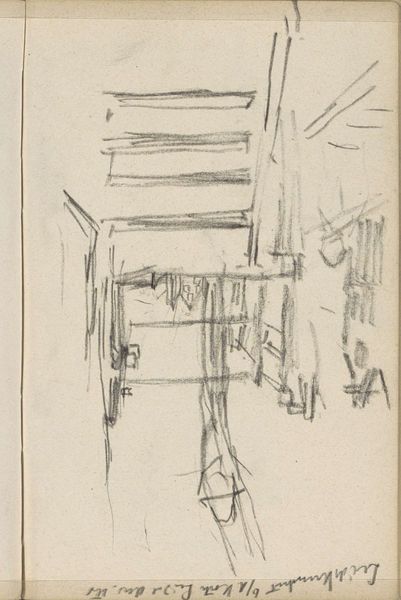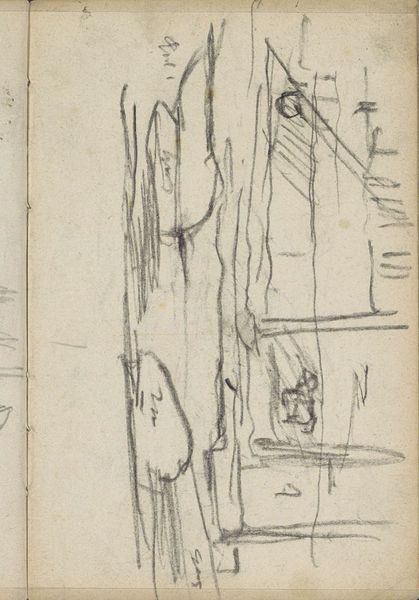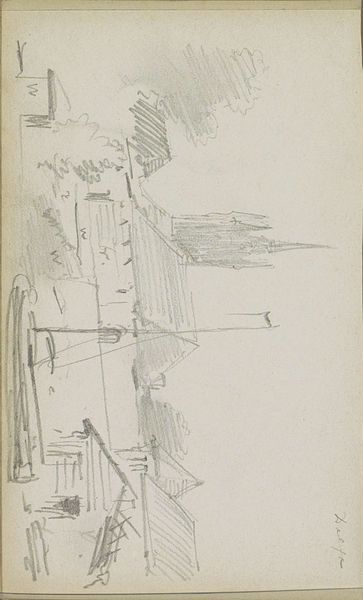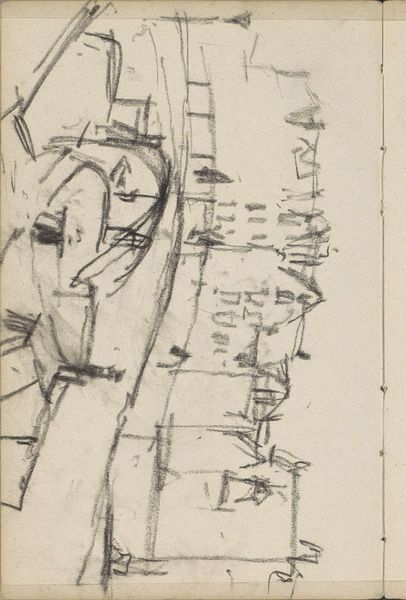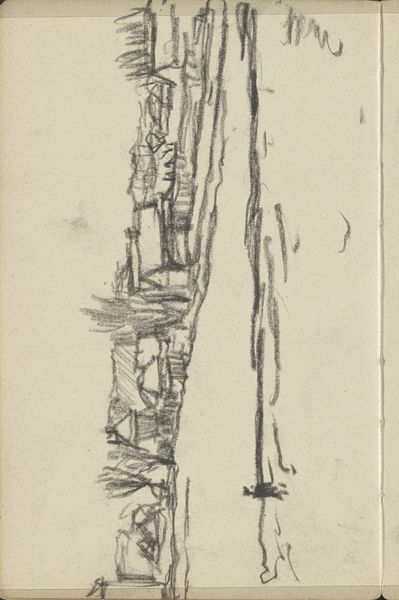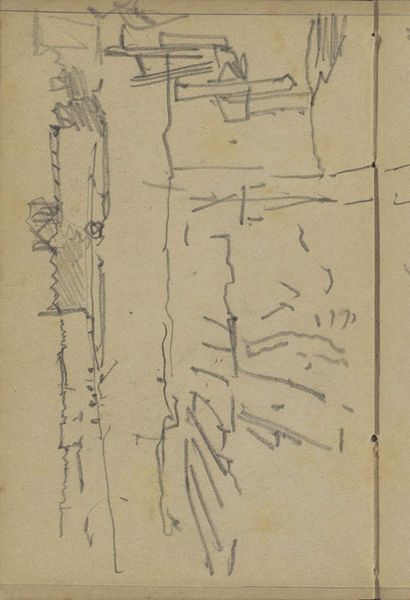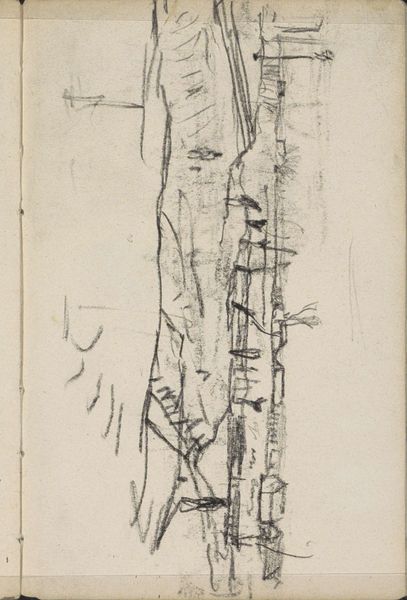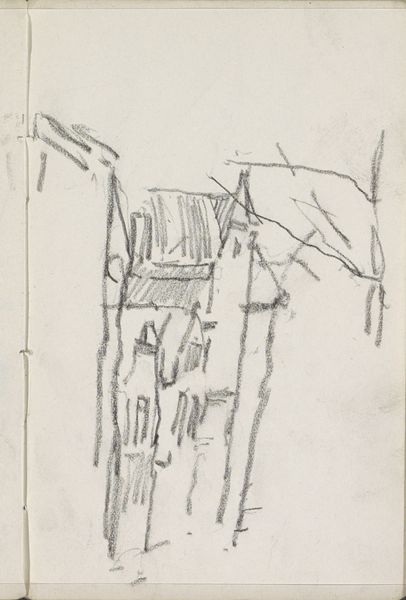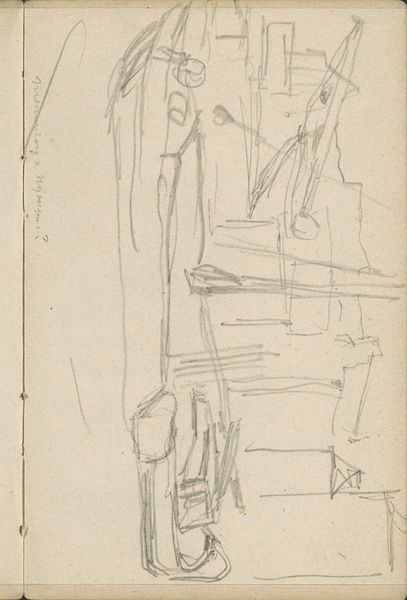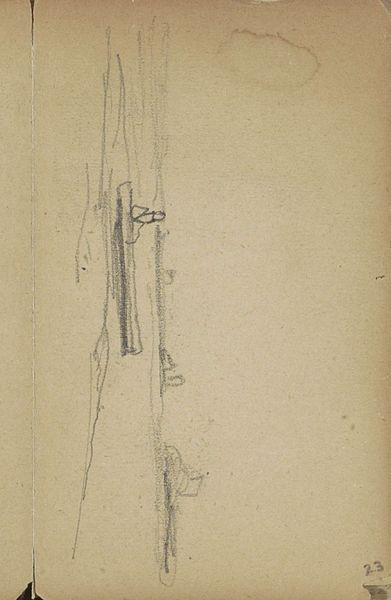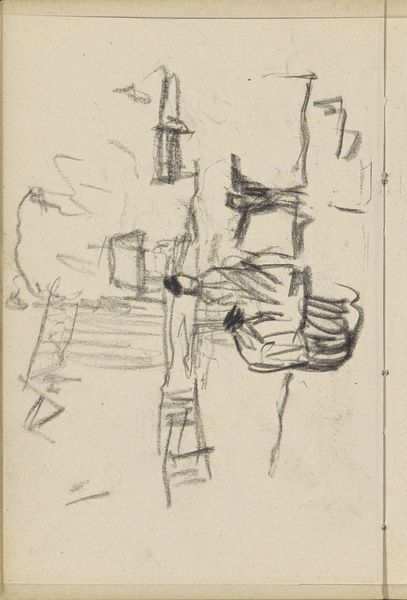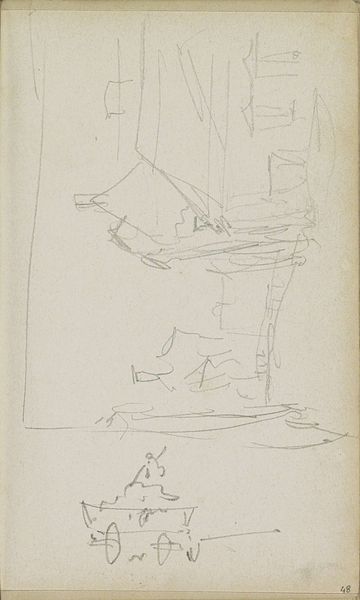
drawing, paper, pencil
#
drawing
#
sketch book
#
landscape
#
paper
#
geometric
#
sketch
#
pencil
#
sketchbook drawing
Copyright: Rijks Museum: Open Domain
Curator: What we're looking at is a pencil drawing by George Hendrik Breitner, likely created between 1907 and 1911, titled "Gezicht op Prinseneiland te Amsterdam". Editor: It strikes me as wonderfully raw, almost brutal in its simplicity. The sharp, angular lines create a sense of immediacy, as if capturing a fleeting moment. Curator: Precisely. Breitner was very much embedded in the urban fabric, and in his unflinching representations of Amsterdam he gives us access to the socio-economic realities of the time. Consider, the working class predominantly inhabited these areas. Editor: The skeletal structure of the scene is powerful. Those stark geometric forms evoke a whole host of associations: industry, maritime activity, the constant push and pull of trade, I wonder how Breitner used these elements in the composition, playing on Dutch collective memory. Curator: It’s also important to recognize the historical context of urban expansion and modernization, so closely linked with growing wealth and, of course, expanding empires. How do we interpret these images in terms of the city’s relationship with global power structures? Editor: It is a point well taken. Breitner was engaging, albeit perhaps unconsciously, with an aesthetic deeply embedded in the nation’s psyche. Water, bridges, houses -- elemental to Amsterdam and a long-standing visual language around commerce. Curator: And we should not overlook the sketchbook format. For Breitner, this was about documenting what he saw around him, in a world shaped by capitalist endeavors. It makes me think of how contemporary photography continues this work, exposing both resilience and exploitation. Editor: True, these rapid, decisive lines mirror the pulse of the city itself. It invites contemplation on the historical trajectory that has led us to our own, late-capitalist era. It prompts us to question how visual traditions can speak volumes, echoing across centuries. Curator: It is in deconstructing these visual cues that the image yields its socio-historical value. Editor: Absolutely. I find that Breitner is almost challenging the viewers to question their presumptions about Amsterdam.
Comments
No comments
Be the first to comment and join the conversation on the ultimate creative platform.
